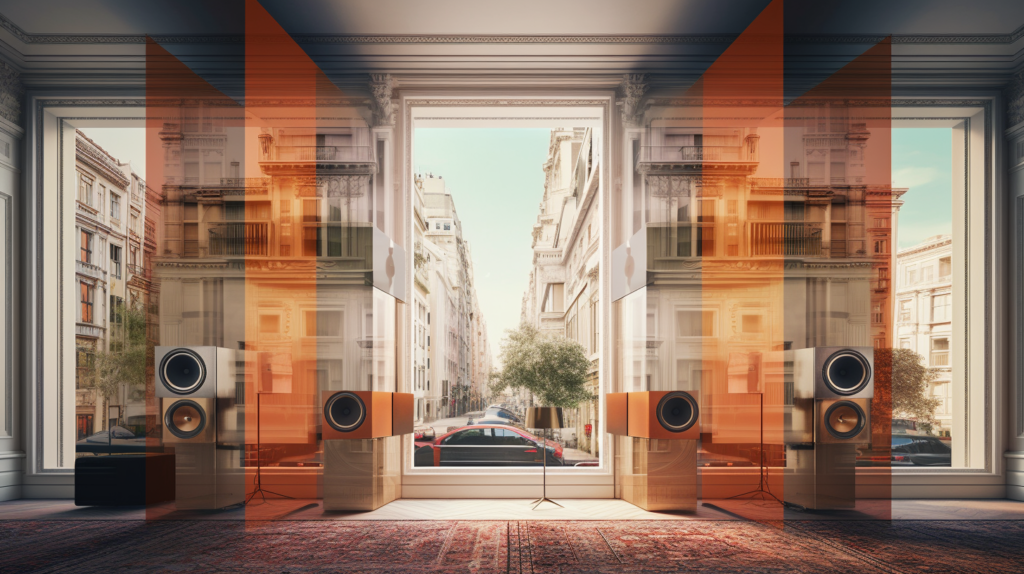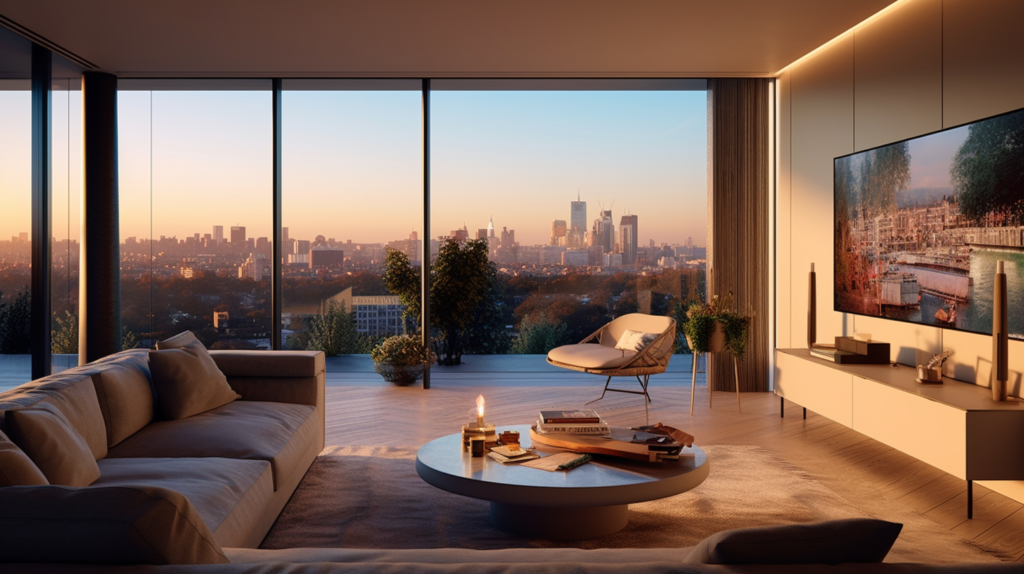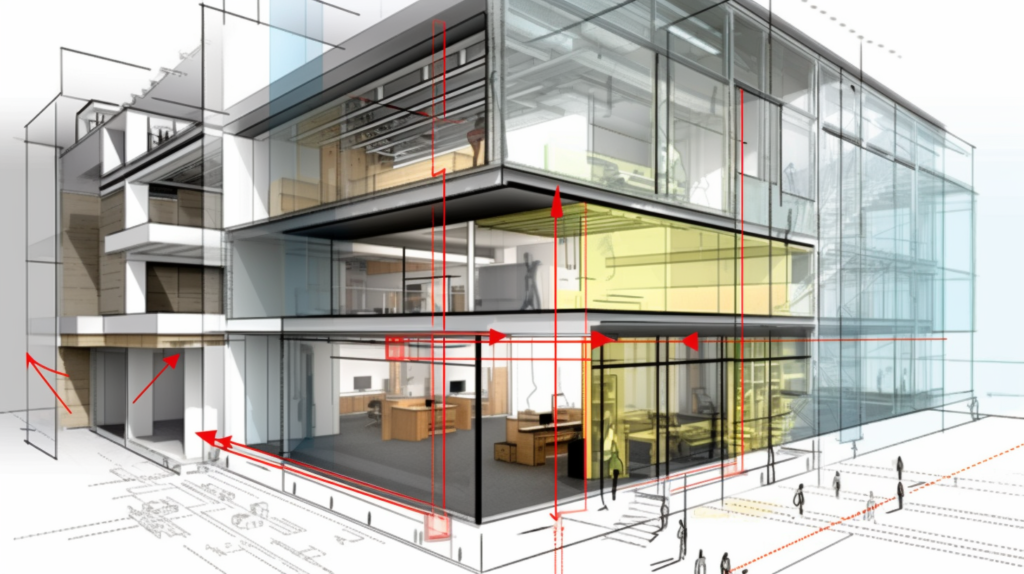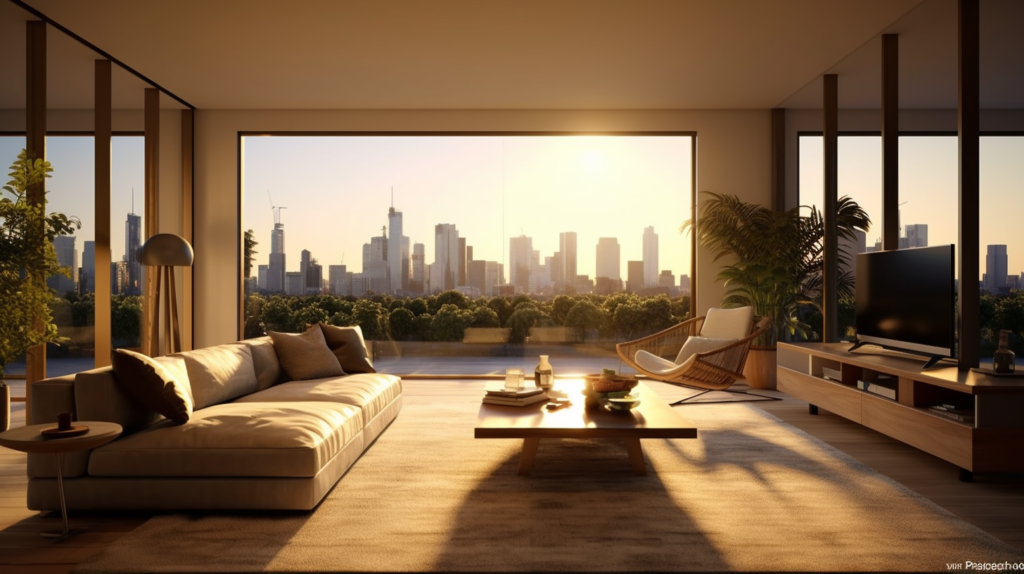In bustling cities, the quest for tranquility leads many to ask: Are new build flats soundproof?
This question goes beyond mere curiosity; it’s a crucial consideration for anyone seeking a peaceful home environment. With urban living spaces denser than ever, effective soundproofing has become not just desirable but essential.
This article will delve into the evolution of residential soundproofing, showcasing how advancements in technology and stringent regulations like Robust Details have elevated quiet living from a luxury to a necessity.
So let’s dive into the silent revolution reshaping our homes.
The Evolution of Soundproofing in Residential Buildings

The concept of soundproofing has undergone a remarkable transformation over the past fifty years. In the 1970s, the awareness and technology for sound insulation were limited, and the construction industry often overlooked the noise factor.
Buildings from that era were not equipped to handle today’s urban cacophony, leaving many to contend with the disruptive sounds of expanding cities.
As populations have surged and urban density has increased, the clamor from streets, neighbors, and even within households has grown louder, propelling soundproofing from a luxury to a necessity in residential design.
Over time, builders and architects have recognized the critical need for peace and quiet within living spaces.
By the turn of the millennium, a new awareness had emerged, with acoustic comfort becoming an essential feature of home design.
This was not just a change in priority but a response to a growing body of evidence linking noise pollution to health issues.
Consequently, the 2000s saw a significant shift in building codes and standards, reflecting the urgent need for homes to serve as bastions against the relentless noise of the outside world.
These updated standards have led to the incorporation of more sophisticated soundproofing materials and methods, resulting in a vastly improved auditory environment for residents.
As building technologies advanced and people’s expectations of comfort increased, the construction industry began to incorporate innovative soundproofing solutions.
New materials were developed, and old methods were refined, both aimed at reducing the penetration of unwanted noise.
The evolution of these standards is a story of progress and adaptation, with the industry seeking to balance cost, effectiveness, and practicality in the pursuit of quieter homes.
This ongoing evolution has made soundproofing an integral part of modern construction, rather than an afterthought or a premium add-on.
This shift towards more serene living spaces is not just about blocking or absorbing sound. It’s about the recognition that our living environment profoundly impacts our well-being.
As such, soundproofing is now seen as an essential element in the design and construction of new buildings, ensuring that residents can enjoy their homes as tranquil sanctuaries from the hectic world outside.
Are new Build Flats Soundproof?

When it comes to the soundproofing of new build flats, the Sound Transmission Class (STC) rating is a critical metric used to quantify how well a building attenuates airborne sound.
STC ratings are an integral part of the Robust Details (RD) certification process, providing a standardized measure of a partition’s ability to reduce noise.
The higher the STC rating, the more effective the structure is at blocking sound transmission.
Under RD specifications, the STC ratings for airborne noises must meet or exceed certain thresholds to ensure a significant reduction in sound transmission.
For example, walls and floors between living spaces typically require STC ratings of 40 or above, which means that loud speech can be faintly heard but is generally not intelligible.
In practice, many new constructions aim for even higher STC ratings, sometimes reaching up to 50 or 60, which indicates superior soundproofing where most common noises are muted to a whisper.
Impact noise, on the other hand, is evaluated using Impact Insulation Class (IIC) ratings, which assess a floor/ceiling assembly’s ability to reduce the transmission of impact sounds, such as footsteps or dropped objects.
RD standards stipulate that these ratings also meet minimum requirements to ensure that daily activities from upper floors do not unduly disturb residents below.
IIC ratings are complementary to STC ratings and are just as crucial for overall acoustic comfort in multi-story buildings.
To achieve these high STC and IIC ratings, RD-compliant flats incorporate a variety of sound-dampening materials and construction techniques.
These can include the use of dense insulation materials, decoupled framing structures, resilient underlayments for flooring, and other specialized acoustic treatments.
The exact materials and methods used can vary depending on the specific RD chosen for the project, as each RD contains detailed specifications tailored to its unique soundproofing solution.
It is important to note that while RD provides robust guidelines for construction, the actual STC and IIC ratings achieved can be influenced by the quality of construction and adherence to the specified details.
Consequently, builders and developers must follow RD specifications meticulously to ensure that the intended soundproofing performance is realized in the finished building.
Modern Soundproofing Standards and Regulations

In the current era, residential buildings are held to stringent soundproofing standards that were unimaginable just a few decades ago.
These standards are not arbitrary; they are the result of extensive acoustic research and are a reflection of society’s increased desire for private and peaceful living spaces.
At the heart of these regulations in many countries is the concept of Robust Details (RD), a set of guidelines that have had a profound impact on how buildings are constructed to manage noise.
The role of RD and similar standards is to provide a blueprint for achieving superior sound insulation in various types of construction.
They do this by specifying the types of materials to be used, the construction methods to be followed, and the acceptable levels of noise transmission for different building elements.
This level of specificity is crucial because it eliminates guesswork and ensures that soundproofing measures are both effective and consistent across the construction industry.
These regulations also serve a broader purpose by fostering an environment in which quiet is not only appreciated but expected.
By setting clear acoustic performance targets, they ensure that all stakeholders in the building process — from architects to builders to material suppliers — have a common goal.
This concerted effort towards better sound insulation has resulted in a notable improvement in the quality of construction and by extension, the quality of life for those who inhabit these modern buildings.
Furthermore, the enforcement of these soundproofing standards is not taken lightly.
Compliance is often monitored through rigorous testing and certification processes, ensuring that buildings do not just look good on paper but also deliver real-world acoustic benefits.
As a result, residents in new builds can expect a level of acoustic privacy that was once reserved for high-end, luxury developments.
Understanding Robust Details (RD) in Soundproofing

Robust Details (RD) represent a paradigm shift in how sound insulation is approached in the construction of new homes.
This innovative framework was developed as a proactive solution to the shortcomings of earlier soundproofing efforts.
It outlines a series of construction designs that have been pre-approved and rigorously tested for their sound insulation properties.
The essence of RD is not merely to comply with existing regulations but to exceed them, thus providing a higher standard of living for occupants.
The RD scheme is comprehensive, covering various aspects of construction, from the type of wall and floor systems to the specific materials used in seals and finishes.
Each RD-certified detail is backed by empirical evidence demonstrating its effectiveness in reducing noise transmission.
Builders who choose to follow these details are able to offer a quantifiable improvement in soundproofing, which serves as an assurance of quality for prospective homeowners.
For developers, the RD certification process represents an opportunity to distinguish their properties in a competitive market.
By adhering to these robust details, they signal a commitment to quality that goes beyond the minimum requirements.
The RD initiative also streamlines the construction process by providing a set of proven solutions that can be replicated with confidence, reducing the need for extensive sound testing and potential rework due to non-compliance.
The impact of RD on noise reduction in residential properties is significant.
The pre-approved construction methods help to address common noise issues such as flanking transmission, where sound bypasses main soundproofing defenses by traveling through structural elements like floors and ceilings.
By providing solutions to such complex challenges, RD ensures that residents enjoy a level of acoustic comfort that was once difficult to achieve.
This focus on acoustical excellence is reshaping expectations, making soundproofing a central consideration in new home construction.
Design and Construction Techniques for Better Sound Insulation

The design and construction of a building are critical factors in its overall soundproofing effectiveness.
Modern architecture has embraced the challenge of noise control, with innovative design strategies becoming a fundamental part of the planning process.
Designers now often employ a layered approach to sound insulation, incorporating multiple soundproofing elements throughout a building’s structure to create a comprehensive barrier against noise.
Advanced construction techniques also play a pivotal role in enhancing the acoustic environment of a building.
For instance, techniques such as staggered stud and double-wall construction have become more prevalent.
These methods involve creating non-continuous wall structures that prevent sound waves from easily transferring from one side of a wall to the other, thereby greatly reducing the amount of sound that can pass through.
In addition to wall construction, the strategic placement of windows and doors, as well as the selection of their materials, are considered with acoustics in mind.
Double-glazed windows and solid-core doors are standard features in new builds, designed to dampen external noise before it can enter the living space.
Similarly, the layout of rooms within a building is planned to minimize potential noise disturbance, with living areas and bedrooms often positioned away from noise-prone areas such as elevators and high-traffic corridors.
The construction industry has also adopted specialized techniques for installing soundproofing materials.
These include floating floors, which reduce impact noise, and resilient channel ceilings, which disrupt the path of airborne noise.
Furthermore, acoustic sealants are used to fill gaps where sound might travel, ensuring that even the smallest openings are addressed.
The Benefits of Improved Soundproofing in Modern Living Spaces

The significance of soundproofing in modern living spaces extends far beyond mere noise reduction; it enhances the overall quality of life for residents.
In today’s fast-paced and often noisy world, the ability to retreat into a quiet, peaceful home is a valued aspect of modern living.
Improved soundproofing means that residents can enjoy their home entertainment, engage in quiet study or work, and rest undisturbed by the chaotic sounds of the external environment.
The health benefits associated with better sound insulation are substantial.
Continuous exposure to noise pollution has been linked to a range of negative health outcomes, including sleep disturbances, increased stress levels, and even cardiovascular issues.
By providing a quieter living environment, soundproofed homes can contribute to the physical and mental well-being of occupants, offering a sanctuary where the body and mind can recover from the stresses of daily life.
For families with children, enhanced soundproofing can be particularly beneficial.
Children’s sleep patterns and overall comfort can be sensitive to noise, and a soundproof home can provide a more conducive environment for learning and playing.
Additionally, for professionals working from home, a sound-insulated space is crucial for maintaining productivity and professionalism during remote meetings and work sessions.
Beyond the immediate comforts, improved soundproofing also adds economic value to a property. In the real estate market, a quiet home is often a more attractive and competitive property, commanding higher prices and faster sales.
Developers and builders who prioritize soundproofing are not only investing in the immediate satisfaction of their clients but also in the long-term value of their projects.
Enhanced Desirability of Soundproofed Properties in Modern Real Estate

In the realm of modern real estate, properties with high-quality soundproofing stand out as particularly desirable.
This desirability stems from an increased awareness among buyers and renters of the importance of a peaceful living environment.
As urban areas become more densely populated and noise pollution becomes a greater concern, properties that offer a reprieve from the constant buzz of city life are highly sought after.
Real estate agents and property developers are keenly aware of this trend and often highlight soundproofing features as key selling points.
The presence of advanced sound insulation is a marker of quality and modernity in new builds, distinguishing them in a crowded market.
Properties that boast certified soundproofing, such as those compliant with Robust Details standards, often enjoy a competitive edge, drawing the attention of discerning clients who are willing to invest in their comfort and tranquility.
The investment in soundproofing also pays dividends in terms of property longevity and maintenance.
Structures built with sound insulation in mind tend to exhibit better overall construction quality.
They are often more airtight and energy-efficient, leading to lower utility bills and a reduced environmental impact.
This holistic approach to construction not only meets the immediate acoustic needs of residents but also contributes to the long-term sustainability and cost-effectiveness of the property.
Moreover, soundproofing adds an element of privacy that is increasingly valued.
In a world where personal space is often encroached upon by the proximity of neighbors and street noise, a soundproofed home can be a private oasis.
This aspect of residential design is especially important in multi-dwelling units, such as apartments and condos, where residents live in close quarters and the potential for noise disturbance is high.
Conclusion
In conclusion, the progress in residential soundproofing mirrors our pursuit of tranquility in the home.
From the basic noise control of the past to today’s advanced, technology-infused solutions, soundproofing reflects our deepening understanding of the importance of a quiet living environment for well-being.
The integration of robust standards like RD and the emphasis on STC and IIC ratings exemplify the industry’s commitment to acoustic comfort as a standard amenity, not a luxury.
The market’s high regard for well-insulated properties underscores the modern homeowner’s preference for peace and privacy.
This trend towards valuing quietude is driving innovation in construction, promising smarter and more sustainable soundproofing methods.
As this field evolves, we can expect our homes to become even more adept at providing the sanctuary we seek, proving that quality of life is as much about the silence that surrounds us as the space we inhabit.
